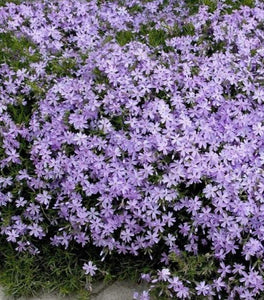
Images Depict Mature Plants
Leadwort Plants for Sale Online
Low-growing leadwort or Ceratostigma plumbaginoides produces interesting foliage that makes a nice groundcover, especially over bulbs as it awakens very late in spring. Deep green foliage turns to red hues in fall. Electric blue, starry flowers in the late summer are captivating.
Spreads slowly, providing wonderful drifts of color. As the flowers fade, the autumn foliage turns on, developing brilliant shades of red.
Ceratostigma plumbaginoides produces brilliant blue flowers with striking red calyxes that cover bright green foliage from mid-summer to fall when the leaves turn deep red. A wonderful groundcover, it is a great choice for beds of spring bulbs because it emerges late, as the bulb foliage declines.

| Hardiness Zone: | 5-9 |
|---|---|
| Mature Height: | 1 to 1.5 feet |
| Mature Width: | 2 to 3 feet |
| Classification: | Perennial Groundcover |
| Sunlight: | Full Sun to Part Sun |
| Habit: | Spreading, clump forming |
| Flower Color: | Blue |
| Flowering Season: | Mid Summer through Early Fall |
| Foliage: | Greenish Bronze |
| Soil Condition: | Prefers dry, average to sandy soil, wont tolerate wet soil in winter |
| Water Requirements: | Water well until established |
| Uses: | Extremely attractive when used as a groundcover in the mixed border, or mass planting. Attracts pollinators and hummingbirds |
How to Care for Hardy Plumbago
Be sure to read our planting instructions to ensure a healthy and happy plant for years to come!
Planting Ceratostigma plumbaginoides
We suggest when planting your newly purchased Ceratostigma plumbaginoides plants that you dig a hole twice as wide as the root system but not deeper. Depending on the quality of your existing soil you may need to add a locally sourced compost or topsoil to the back-fill soil. We do not recommend using straight topsoil or compost as a back-fill soil because more times than not these products will retain entirely to much moisture and will cause the root system to rot. Adding compost or topsoil will help the young feeder roots to spread through the loose, nutrient rich soil, much easier than if you used solely the existing soil which more times than not will be hard and compacted. The most common cause of plant death after transplanting is planting the new plant to deep. That is why we do not recommend planting in a hole any deeper than the soil line of the plant in the pot. A good rule is that you should still be able to see the soil the plant was grown in after back-filling the hole. Ceratostigma plumbaginoides does prefer drier soils in the winter so if there was ever a plant that we would recommend not adding topsoil or compost this is one.
Watering Ceratostigma plumbaginoides
After back filling and lightly compacting the 50/50 mix of existing soil and compost give the Ceratostigma plumbaginoides a good deep watering. This is not to be rushed. Most of the water you put on the plant at first will run away from the plant until the soil is soaked. A general rule of thumb is to count to 5 for every one gallon of pot size. For example a one gallon pot would be watered until you count to 5 a three gallon pot would be 15 and so on. Check the plant daily for the first week or so and then every other day there after. Water using the counting method for the first few weeks.














